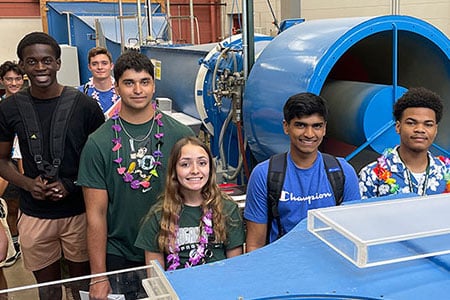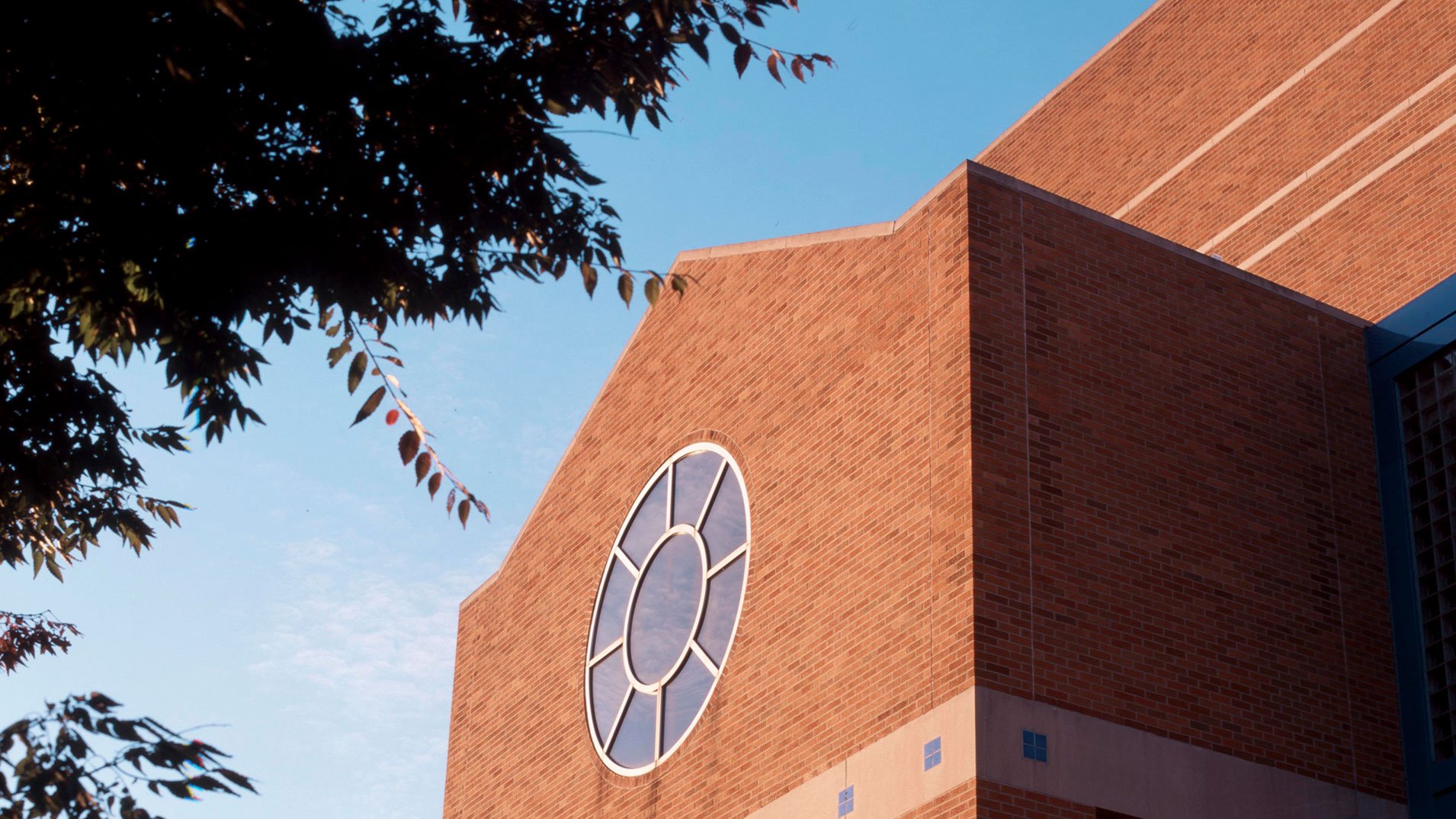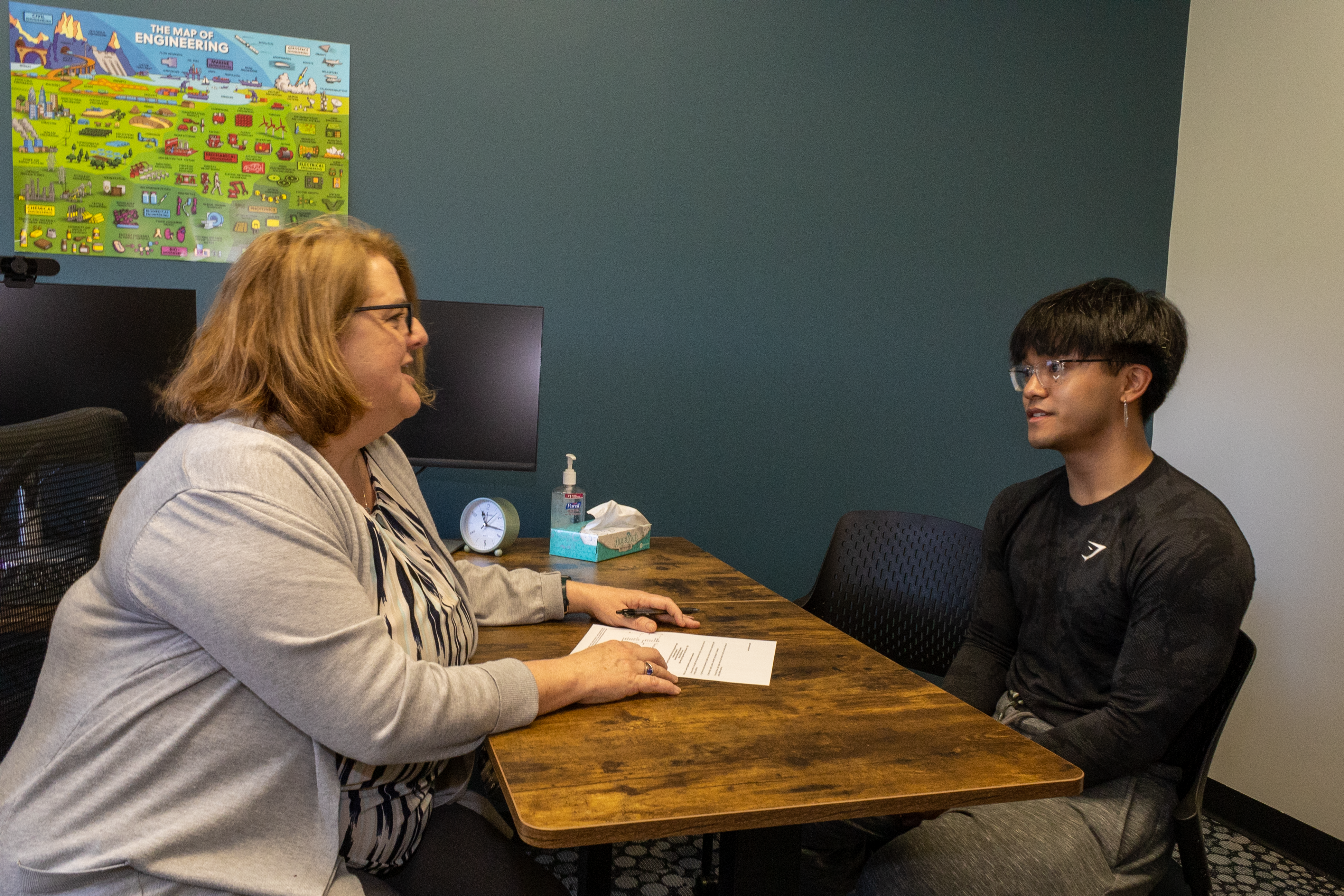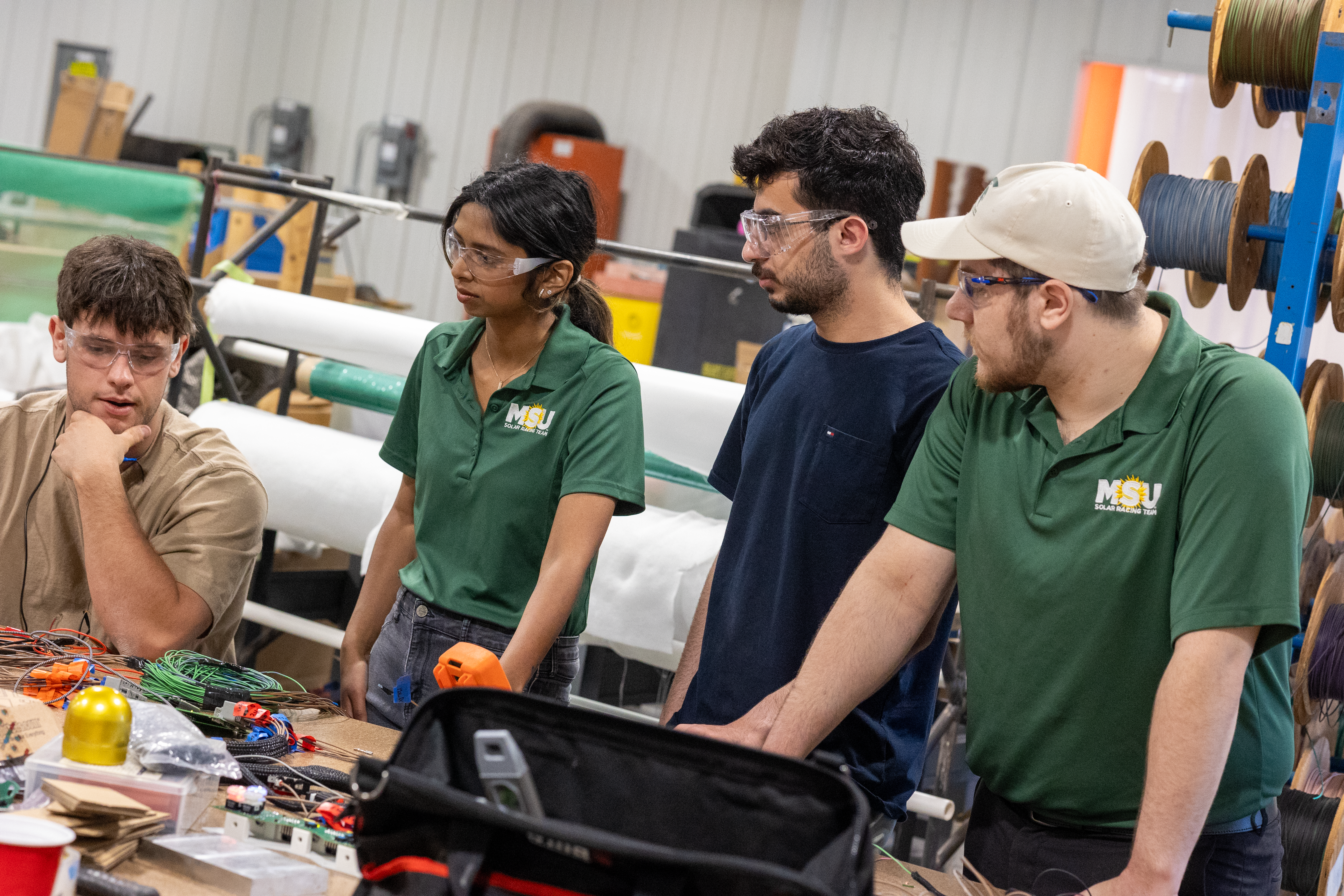MSU’s decades-long tradition of heavy-ion accelerator expertise tapped to help meet current national shortfall of testing capacity for advanced microelectronics, including for space-based applications
Michigan State University will build on its 60-year track record in accelerator-based nuclear physics leadership by refurbishing the history-making K500 cyclotron and installing it as the heart of a new chip-testing facility for next-generation semiconductor devices.
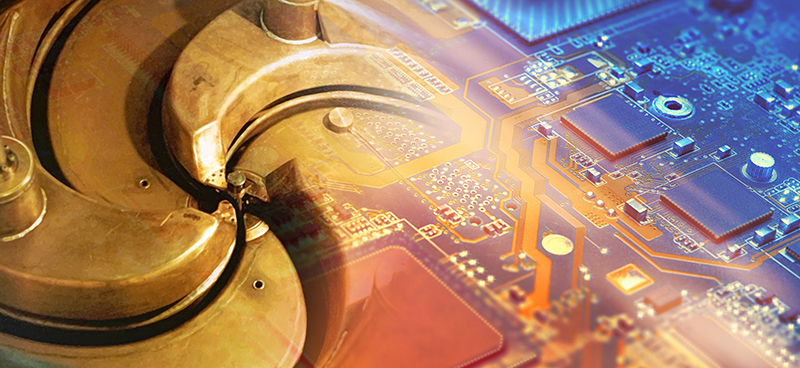
The facility establishment, supported by a $14.2 million contract funded by the U.S. Department of Defense Test Resource Management Center (TRMC) and awarded through the U.S. Department of Defense Missile Defense Agency (MDA), will be based at the Facility for Rare Isotope Beams (FRIB). The facility will help meet the current national shortfall of testing capacity for advanced microelectronics, including those used for commercial spaceflight, 5/6G wireless technology and autonomous vehicles.
The new East Lansing facility will be what amounts to the third act for the K500, which burst onto the nuclear science scene 40 years ago, making history as the world’s first superconducting cyclotron.
“This new FRIB-adjacent facility at MSU will provide the United States several thousand additional hours of capacity for chip testing annually,” said MSU Interim President Teresa K. Woodruff, Ph.D. “We are ready to leverage a six-decade-long investment by the National Science Foundation in basic nuclear science at MSU for a new purpose that is so central to this critical industry, to U.S. competitiveness, and to national security.”
Among the most immediate goals is the testing of electronic components for use in space, where levels of ionizing radiation are much higher than at the Earth’s surface and where devices must operate for years or even decades with little if any maintenance. The MSU proposal for funding was in direct response to the 2018 National Academies report, “Testing at the Speed of Light,” which outlined a critical national shortfall of testing capacity of space-bound electronic components.
New chapter, same story
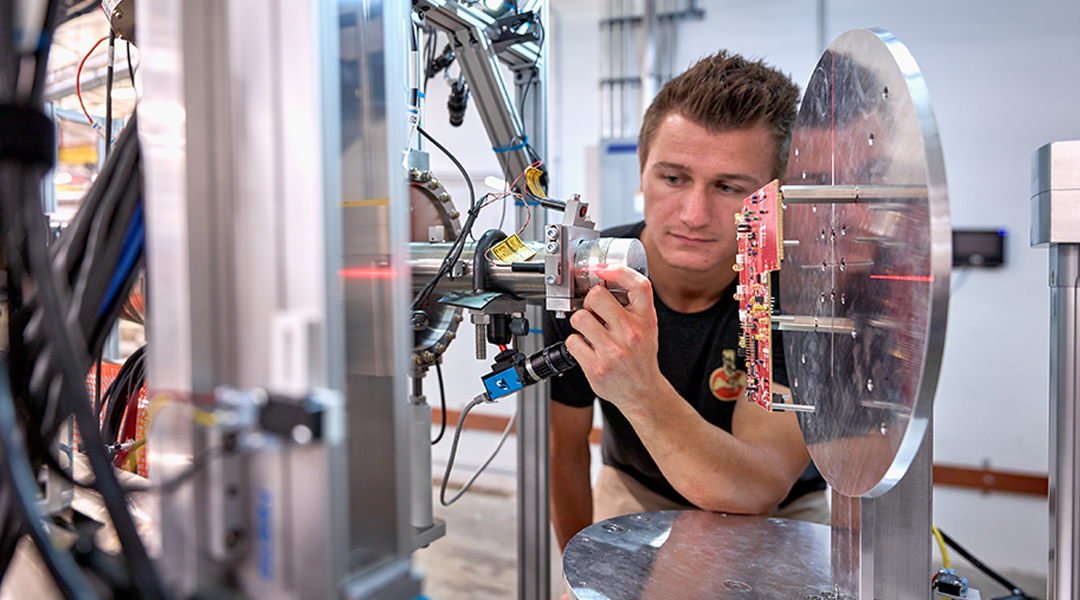
The K500’s newest chapter – one relevant to daily headlines that cut across the domains of geopolitics, business, and technology – is set to continue a long MSU story of fueling disruptive innovation to create novel physics hardware, which is then leveraged to create sustained and broad-based benefits to support the nation. Perhaps the most prominent example of this pattern: a near copy of the K500 operates today at Texas A&M University where it’s used for nuclear physics research.
“MSU has been purposeful in leveraging its accelerator assets for new applications over the course of its nearly 60-year history in accelerator-based nuclear science leadership,” explained Thomas Glasmacher, FRIB Laboratory director. “This award enables us to continue that tradition at FRIB while delivering on our mission of addressing societal problems by providing this additional resource to advance current U.S. interests.”
The K500’s first act ushered in the superconducting cyclotron era for research with heavy ions. It was built on a shoestring budget, as is typical for the one-of-a-kind nature of devices in accelerator physics and was often quite unreliable in its early days. Act two followed a hiatus and refurbishment in the late 1990s for coupling with the more powerful K1200 cyclotron.
Initially approved by the NSF in 1996, the Coupled Cyclotron Facility (CCF) began operations in 2001 and was used more or less continually until November 2020. It enabled research with fast rare isotope beams at the National Superconducting Cyclotron Laboratory (NSCL), supported by the NSF. Among other things, the lab was known for its efficiency and uptime, eventually surpassing 90 percent, which is noteworthy given the complexity of the equipment.
This track record loomed large in MSU’s successful bid for FRIB, which the FRIB Project team built ahead of schedule and on budget. FRIB experiments are underway using what will be the world’s most powerful heavy-ion linear accelerator (linac).
The new linac might have finally spelled the end of the lower energy K500. However, in a pattern that has recurred in the history of innovation, the older technology instead has found new and, given the more than $500 billion semiconductor market and strategic importance of the chip industry, perhaps even wider relevance.
“The laboratory has always had an emphasis on building instruments that advanced the options available for solving basic and applied research problems in nuclear science,” said Andreas Stolz, MSU professor and FRIB rare isotope operations department manager. "We are excited to apply our operational expertise and the K500 cyclotron to a new purpose, especially one so relevant to the national interest.” Stolz is the principal investigator on the MDA contract.
Creating an ‘unparalleled ecosystem’
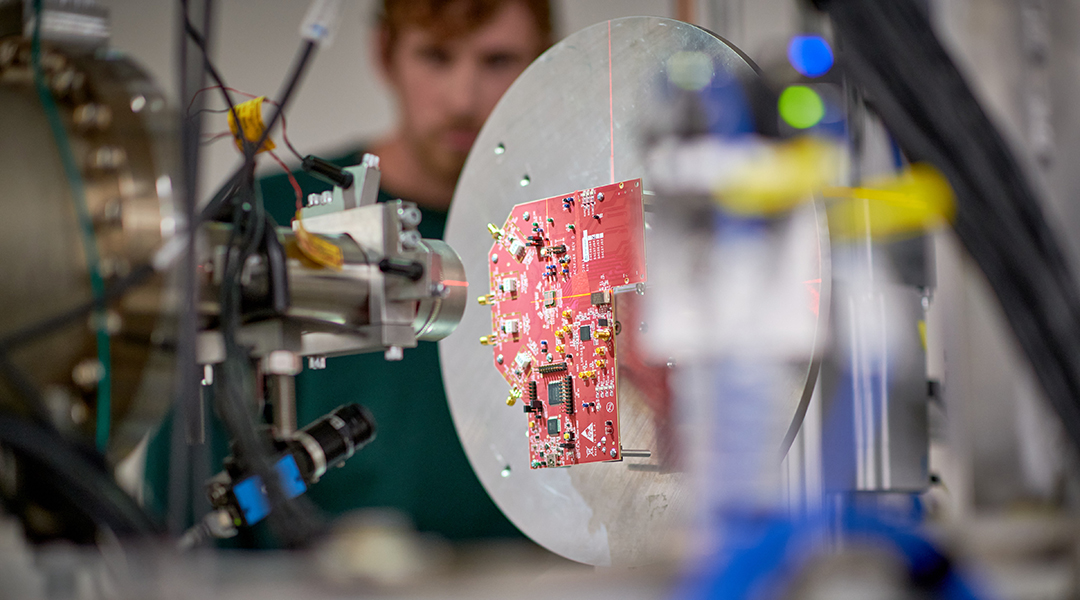
The new facility will complement a host of related work and initiatives at MSU and furthers university leadership in nuclear science, microelectronics, and semiconductors. FRIB’s Single Event Effects (FSEE) facility is already operational, offering a menu of beams and ion cocktails for use in research. Another example: MSU’s new Space Electronics Center, a collaboration with Texas Instruments, was announced this fall and leverages FRIB to provide a range of services to industry, including research projects, workforce development, technical workshops and forums for small corporate delegations to have a presence on MSU’s campus. MSU’s nuclear physics graduate program has been ranked No. 1 since 2010 by U.S. News and World Report.
“MSU, FRIB, and the College of Engineering, through the Space Electronics Center, are creating an unparalleled ecosystem that will include strong industry and government participation to advance the state-of-the-art in radiation-hardened components and space electronics, and above all, to develop the necessary talent that will support this technology discipline for years to come and solidify the U.S. position as a leader in this field,” said John Papapolymerou, MSU Research Foundation Professor and chair of the MSU Electrical and Computer Engineering Department.
Use of the new MSU facility will extend far beyond defense and aerospace applications since today more than ever, the semiconductor industry is marked by the creation of ever smaller, denser and more complex custom circuitry. Following the broad outlines of Moore’s Law, the industry has delivered a steady march of faster, cheaper and more power-efficient computing technologies for decades. Advanced semiconductor devices, with nanometer-scale features and often purpose-built with stacked interconnected chips to further increase capability, are increasingly susceptible to ionizing radiation.
Usually such effects – bit-flips of memory elements in a chip – don’t permanently damage the device. However, there are examples of real-world problems, from the trivial (impacting the outcome of a 2013 Super Mario game contest) to the more serious (causing injuries on a 2008 Qantas flight, which plunged downward when the onboard computer malfunctioned.) Risks only increase as more of daily life becomes dependent on applications ultimately mediated by computer hardware and software.
“Space electronics applications can act as a catalyst to attract a brand-new generation of engineers and scientists needed to fill the more than 50,000 positions in the general area of semiconductors over the next five years or so, said Papapolymerou. “MSU will play a central and pivotal role in this talent pipeline development.”
Experts, experience will guide the next transition
FRIB will draw on a deep well of institutional and operational expertise to transition the K500 cyclotron into its third act.
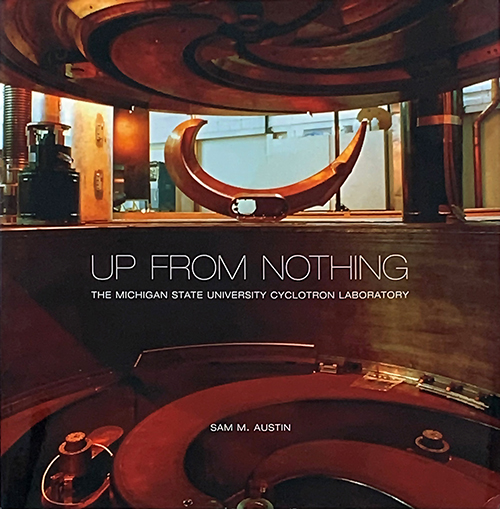
"Downtime to tune the equipment or fix problems is expensive, not only in dollars but also in lost opportunities for discovery and education, so we've long been incentivized to be efficient and meet the needs of our experimenters," says Sam Austin, University Distinguished Professor Emeritus in nuclear physics and former NSCL Director. "We're proud of our culture and approach, which is to do what it takes to make our users successful.”
NSF investment in accelerator-related research at MSU dates back to 1961 and resulted in many important advances in basic and applied rare isotope research, many of which are outlined in Austin’s 2016 book “Up from Nothing.” These advances include dozens of examples of experimental apparatus and techniques, from spectrographs to superconducting solenoids to stopping fast beams.
“This is really about the value of sustained vision and concomitant actions over decades,” said Glasmacher. “Part of building resiliency in U.S. science and technology, whether in nuclear science or semiconductors, is not to forget work that’s come before, but rather to leverage assets for future discoveries.”
Story written by Geoff Koch. See more at MSUToday.
